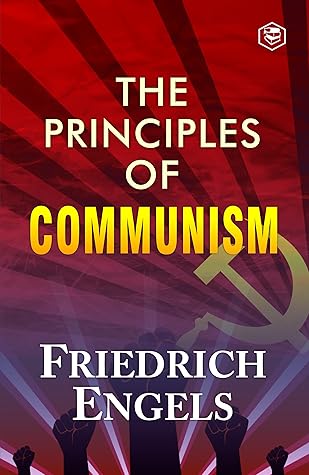More on this book
Kindle Notes & Highlights
(i) The class of big capitalists, who, in all civilized countries, are already in almost exclusive possession of all the means of subsistance and of the instruments (machines, factories) and materials necessary for the production of the means of subsistence. This is the bourgeois class, or the bourgeoisie. (ii) The class of the wholly propertyless, who are obliged to sell their labor to the bourgeoisie in order to get, in exchange, the means of subsistence for their support. This is called the class of proletarians, or the proletariat.
the price of labor, or the wage, will, in other words, be the lowest, the minimum, required for the maintenance of life.
The slave is sold once and for all; the proletarian must sell himself daily and hourly.
The individual slave, property of one master, is assured an existence, however miserable it may be, because of the master’s interest. The individual proletarian, property as it were of the entire bourgeois class which buys his labor only when someone has need of it, has no secure existence. This existence is assured only to the class as a whole.
The slave frees himself when, of all the relations of private property, he abolishes only the relation of slavery and thereby becomes a proletarian; the proletarian can free himself only by abolishing private property in general.
The introduction of free competition is thus public declaration that from now on the members of society are unequal only to the extent that their capitals are unequal, that capital is the decisive power, and that therefore the capitalists, the bourgeoisie, have become the first class in society.
Third, everywhere the proletariat develops in step with the bourgeoisie. In proportion, as the bourgeoisie grows in wealth, the proletariat grows in numbers. For, since the proletarians can be employed only by capital, and since capital extends only through employing labor, it follows that the growth of the proletariat proceeds at precisely the same pace as the growth of capital.
Ever since the beginning of this (19th) century, the condition of industry has constantly fluctuated between periods of prosperity and periods of crisis; nearly every five to seven years, a fresh crisis has intervened, always with the greatest hardship for workers, and always accompanied by general revolutionary stirrings and the direct peril to the whole existing order of things.
It will, in other words, abolish competition and replace it with association.
revolutions are not made intentionally and arbitrarily, but that, everywhere and always, they have been the necessary consequence of conditions which were wholly independent of the will and direction of individual parties and entire classes.
In all probability, the proletarian revolution will transform existing society gradually and will be able to abolish private property only when the means of production are available in sufficient quantity.
18. WHAT WILL BE THE COURSE OF THIS REVOLUTION? Above all, it will establish a democratic constitution, and through this, the direct or indirect dominance of the proletariat.
DEMOCRATIC SOCIALISTS: ] Finally, the third category consists of democratic socialists who favor some of the same measures the communists advocate, as described in Question 18, not as part of the transition to communism, however, but as measures which they believe will be sufficient to abolish the misery and evils of present-day society. These democratic socialists are either proletarians who are not yet sufficiently clear about the conditions of the liberation of their class, or they are representatives of the petty bourgeoisie, a class which, prior to the achievement of democracy and the
...more


